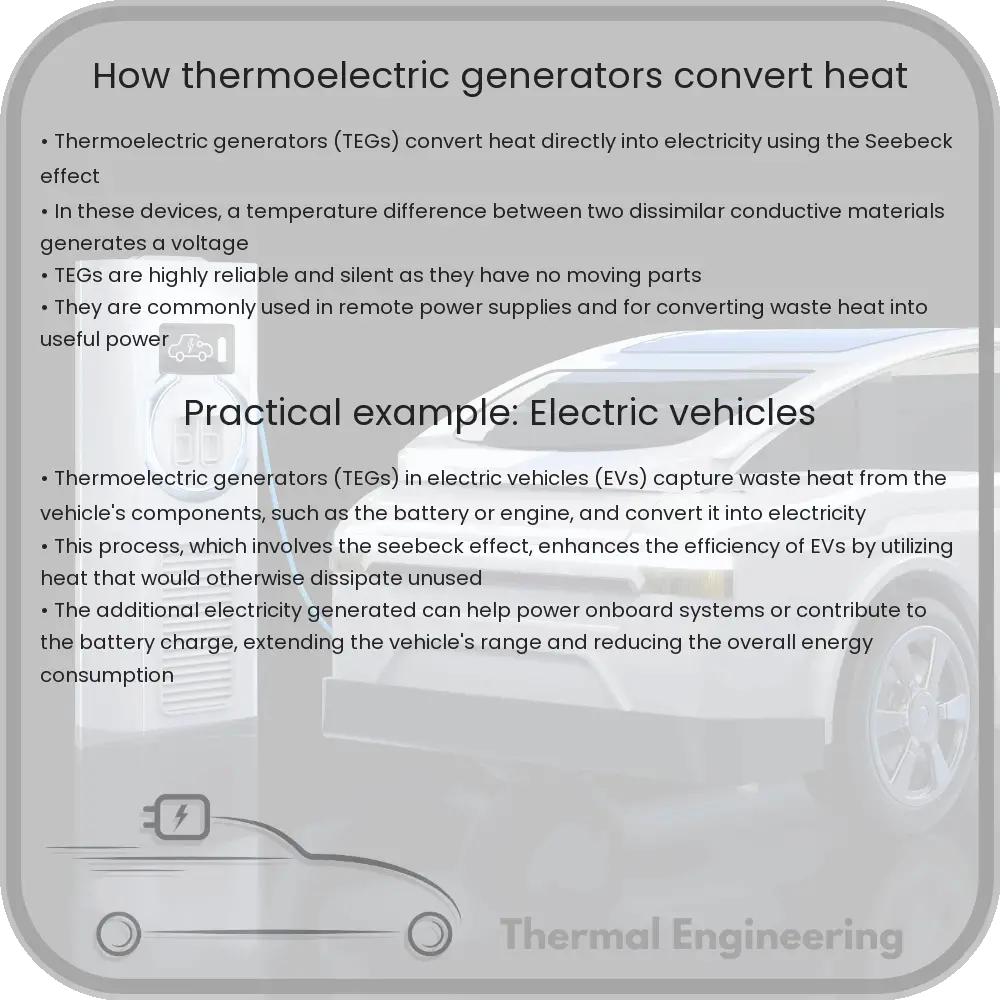An in-depth exploration of thermoelectric generators, how they harness the Seebeck effect to convert heat into electricity, their components, working mechanism, and diverse applications.

Understanding Thermoelectric Generators
Thermoelectric generators (TEGs) are innovative devices that convert thermal energy—simply, heat—directly into electrical energy. This process of energy conversion makes use of the physical phenomenon known as the Seebeck effect. Unlike traditional power generation methods that often involve moving parts and complex mechanisms, thermoelectric generators operate silently with no moving parts, making them highly reliable and low-maintenance. In this article, we explore how these devices work and their practical applications.
The Basics of the Seebeck Effect
The foundational principle behind thermoelectric generators is the Seebeck effect, discovered by German scientist Thomas Johann Seebeck in 1821. The Seebeck effect occurs when two different conductive materials are connected in a circuit and there is a temperature difference between the junctions. This temperature difference creates a voltage difference, which can drive an electric current through the circuit.
In more technical terms, the voltage difference, and hence the generated electric current, is directly proportional to the temperature difference between the hot and cold sides of the thermoelectric materials. Mathematically, this relationship is expressed as:
\[ V = S \times \Delta T \]
Where:
- V is the voltage generated,
- S represents the Seebeck coefficient, which varies based on the materials used, and
- \(\Delta T\) is the temperature difference across the materials.
Components of a Thermoelectric Generator
A typical thermoelectric generator consists of:
- Thermoelectric modules: These modules are the heart of TEGs and usually consist of pairs of p-type and n-type semiconductor materials that are connected electrically in series and thermally in parallel. Each pair forms a thermocouple.
- Heat source: Provides the necessary thermal energy to create the temperature gradient required for generating electricity.
- Heat sink: Absorbs the unused heat from the cold side of the thermocouples, helping to maintain the temperature gradient.
How a Thermoelectric Generator Works
When a TEG is exposed to a heat source, the heat is absorbed by the hot side of the thermoelectric modules. This heat is not completely transferred to the cold side, which is attached to a heat sink. The resulting temperature difference creates a voltage across each thermocouple due to the Seebeck effect. The electric current generated by each thermocouple is harnessed and can be used to power electrical devices or recharge batteries.
Applications of Thermoelectric Generators
Thermoelectric generators have a variety of applications including:
- Spacecraft power supply: Due to their reliability and long life, TEGs are ideal for powering spacecraft and satellites where maintenance is impossible.
- Waste heat recovery: Industries that produce a large amount of waste heat, such as manufacturing and power plants, can use TEGs to recuperate some of that energy and convert it into usable electricity.
- Remote power: TEGs provide electricity in remote locations where conventional power sources are not feasible, such as remote weather stations and unmanned aerial vehicles.
Thermoelectric generators exemplify an exciting application of thermodynamics and material science that turns waste heat – often an unavoidable byproduct in many processes – into a valuable resource. With advancements in materials science, the efficiency and application scope of thermoelectric generators are expected to expand, potentially playing a critical role in future energy systems.